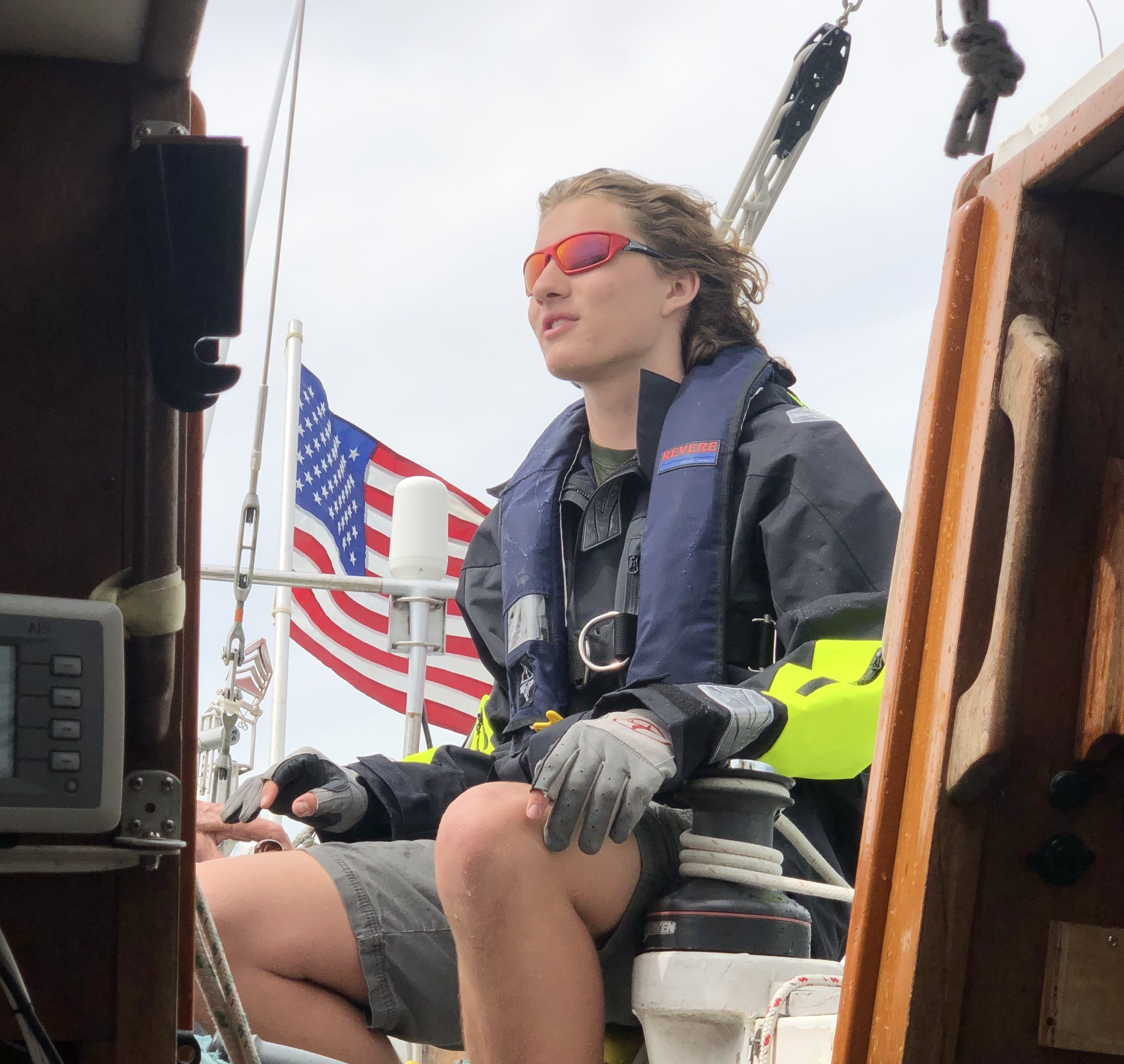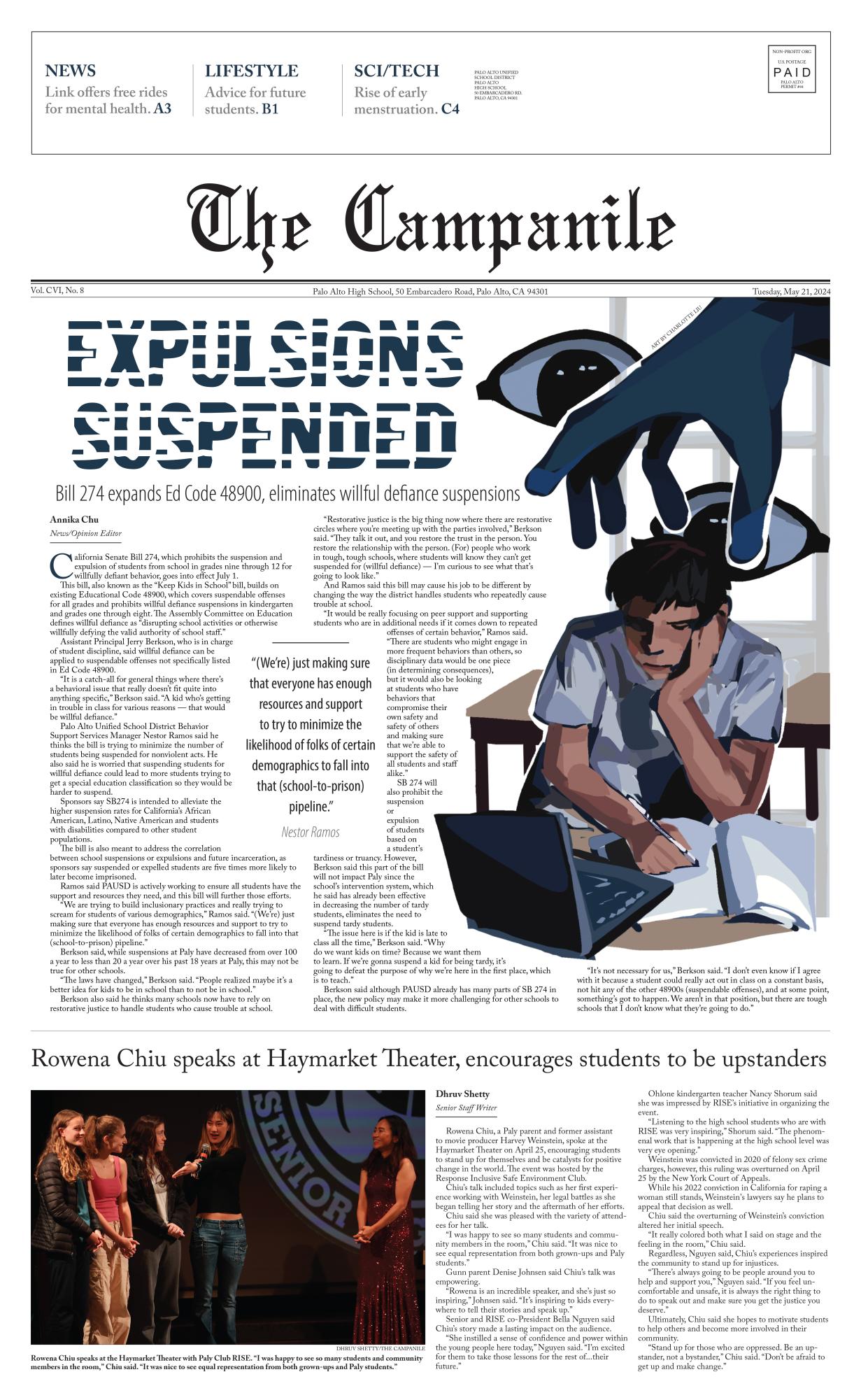Junior Cal Currier peers over the hull of The Argo, the white 30-footlong sailboat he has called home for the summer. Under the cloudless sky, hundreds of purple translucent bubbles dot the sea — Portuguese man o’war jellyfish, which tells him he’s getting closer to his destination.
This summer, Currier voyaged solo across the Atlantic Ocean, a 4000-mile trip that took him from Massachusetts to Portugal.
He arrived at his destination on July 25, becoming the youngest person to single-handedly sail westto-east across the Atlantic. Although Currier said he had practically no sailing experience until January — six months before his trip — the activity runs in his blood: he is descended from a family of transatlantic sailors.
“My dad sailed across the Atlantic when he was in his 20s, and my grandfather also sailed across the Atlantic twice,” Currier said.
However, Currier said he wasn’t interested in sailing growing up.
“Every time I go to the East Coast, my mom’s father, who has been a sailor his whole life, had a 30-foot boat that I sailed on briefly,” Currier said. “I hated it. It was sunny, and it was wet, and it was bad.”
It was only when Currier was trying to find an activity to keep him busy during the summer that sailing became an option.
“It was Thanksgiving break,” Currier said. “I was like, ‘What do I want to do this summer?’ Me and my older brother and my dad were just thinking and brainstorming on a car ride in New Hampshire.”
Currier said that was when he began to consider the idea of sailing across the Atlantic.
“I don’t even remember who came up with the idea,” Currier said. “I kind of just grabbed ahold of it and made it my own.”
Currier said he started preparing in January. For seven months, he worked intensely for the trip, spending 25 to 30 hours a week training.
“Sixteen hours (a week) I was sailing in Redwood City,” Currier said. “Just taking lessons and going from zero, and then I was just watching YouTube videos. You can learn a lot from YouTube.”
Currier took lessons at Spinnaker Sailing, where he practiced sailing on 25-foot boats for eight hour periods around the San Francisco Bay. Currier said he eventually got his own boat from an old sailmaker.
“The guy whom we bought the boat from was this wonderful man named Sandy Benza, and he was a 90-year-old sailmaker,” Currier said. “He had made this boat and he wanted to sail it in a race to Bermuda. But his wife was like, ‘Dude, you’re 90. You’re not going to do this.’ So he sold the boat (to us).”
After completing the journey, Currier said he sold the boat to regain the money he lost in the process of preparing to set sail.
“Most people take about five to six years to sail across the Atlantic and about $300,000,” Currier said. “We took about $25,000, but then we made it all back by selling the boat. And we did it in seven months.”
Until June 27, the day of his departure, Currier said he was not certain he was going to embark on the journey.
“At no point did I tell myself, ‘I’m going to do this,’” Currier said. “Even the day before, I didn’t think I was going to go.”
Currier said this was due to the sheer amount of equipment that needed to be properly functioning.
“The day before I was scheduled to leave, the engine wasn’t ready and the (marine radio) wasn’t ready,” Currier said. “But that night, I fixed it, and then I was ready to leave the next morning.”
Even after he departed, Currier said he did not plan on making the full journey.
“The plan was that I was going to turn back because I had never gone offshore alone,” Currier said. “(It’s a) very different game because there are huge swells. So I said I’ll try it out, and after day two or day three, if I don’t like it, I’ll turn around.”
But Currier said he only experienced smooth sailing.
“It turns out that it was fine and there was no problem,” Currier said. “I kept going, and at no point was there any reason why I needed to turn back, so I didn’t.”
However, sailing alone in the middle of the Atlantic was no easy task. The slightest shift in the wind would shift the direction of Currier’s automatic steering system, which required that he adjust his sails at least once per hour.
“I needed to make sure I was up as much of the time as possible,” Currier said. “It requires this 24/7 really low-level kind of consciousness. You need to be aware of everything, but you never actually need to be doing anything.”
As a result, Currier said he slept in increments of 90 minutes. Currier said his daily routine on the boat was simple: routine checks, then solitaire. And when Currier wasn’t rehydrating or eating a freeze-dried meal, he was reading Greek philosophy.
Despite his record-breaking achievement of navigating across the sea solo, Currier said virtually nothing about his trip was memorable.
“I couldn’t distinguish day to day,” Currier said. “It all just blends together because you’re looking at the ocean.”
Currier also said his biggest challenge was coping with being alone.
“I haven’t been by myself that much of my life just because I have three brothers,” Currier said. “I would have even rather had someone who I dislike because then at least I’d have something to be angry at, you know? It’s not even the number zero.”
While Currier doesn’t plan on solo sailing again soon, he said he is grateful to his parents for giving him the opportunity to take risks.
“The only risk was me getting injured,” Currier said. “I had a whole bunch of medical equipment on board that I’d need to use myself.”
To ensure his medical safety, Currier said he learned how to stitch himself up, set his own bones and relocate a dislocated shoulder.
“My parents had a lot of chill about this,” Currier said. “A lot of parents see any risk as really bad and that the only acceptable risk is no risk.”
Currier said he hopes his journey will inspire other parents to let their kids take more risks.
“What I really want to say to parents is that (they) need to have more chill,” Currier said. “I wish I could try to address that an









